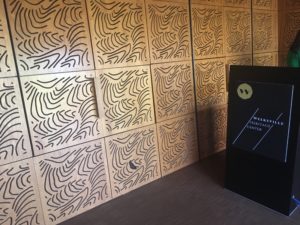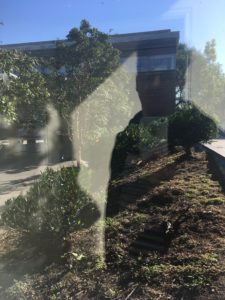Radical Love in the Early Childhood Classroom
 As part of our year-long inquiry of identity, David, our co-teacher in the 4/5s, recently attended the conference “Little Chairs, Big Differences” at Weeksville Heritage Center. The annual conference is for and by early childhood educators and focuses on diversity and equity. The theme of this year’s conference was belonging. Below are David’s reflections from the day:
As part of our year-long inquiry of identity, David, our co-teacher in the 4/5s, recently attended the conference “Little Chairs, Big Differences” at Weeksville Heritage Center. The annual conference is for and by early childhood educators and focuses on diversity and equity. The theme of this year’s conference was belonging. Below are David’s reflections from the day:
At the LCBD conference I attended an anti-racism workshop. The facilitators, Benny Vazsquez and Kate Engle, focused on what they called the three ‘I’s of racism. Institutional, Interpersonal, and Internalized. There is, of course, much to be said about each, but the one that struck me the most, and which the facilitators suggested was the best place to begin one’s own relationship to anti-racism work, is Internalized racism. For me, as a white person, this means taking a close look at my IRS or Internalized Racial Superiority. This is a big challenge for me. Do I really have an internalized sense of racial superiority? I consider myself a “good white person” who is not a racist, and who does not inherently believe that I am superior to anyone else based on the color of my skin. However, as was quickly pointed out in the workshop, we all have unconscious notions that influence our thoughts and behavior. Much of this comes from messages we have received our entire lives from the media, from family, from outdated ideas of how the world works that are perpetuated throughout our society. A word for this sort of invisible influence is smog. Some days you can see the smog, but other days, you breathe it in without even noticing. For instance, for many decades the idea of “lifting up” people of color out of poverty has been pervasive in the liberal white community. Of course, people of color do not require “lifting up” and the very notion includes the idea that white people are somehow “higher up.” And research shows that young children are internalizing these messages (the smog) even before they enter school. Delving into this type of thinking allows me to have context, and to react more openly and constructively to situations in the classroom. For example, pretend I notice two children, one white and one black, both only want to play with the blonde light skinned doll. Instead of thinking “How did this happen?” I am able to realize that societal messages and norms of beauty are at work here, and I need to use this observation as an opportunity to interrupt those messages and have a conversation that plants a different idea. I could pick up the doll with the brown skin and say, “Hello, my beautiful brown baby. What beautiful brown skin you have. Are you cold? Let’s wrap you up in a blanket.” I can model with my words and my actions that I see the brown doll as beautiful and equally worthy of my love and attention. I may even dote on that baby doll for a while. Both our words and our actions show children what we value. In addition, I will seed the days with intentional interactions that demonstrate the message that all skin tones are beautiful. For example, while reading a book, I might point out a character that has “beautiful skin the color of honey” or “pretty curly hair that grows up toward the sun like a sunflower.” Being aware of how societal messages creep into our children’s lives and identities, has made me realize how important it is we interrupt those message with ones of love, inclusion and visibility.
Another salient point came from the keynote speaker, Carla Shalaby. She spoke about some of the key points in her book Troublemakers: Lessons in Freedom from Young Children in School. She spoke about belonging as a human right. She said she has noticed that kids that are labeled troublemakers are often acting out as a way of demanding belonging, crying out for this fundamental need. She went on to ask us all to take a close look at how we create and maintain rules in the classroom. Classrooms need rules, of course, but what is the purpose of these rules? She argued that classroom rules should orient us toward each other and help us deal with our conflicting needs. Ultimately she made a connection to civil rights and political activism that spoke to me deeply. She reminded us that the revolution many of us crave is a revolution of love and kindness, such as that conceived by Dr. Martin Luther King Jr., and others. In my younger, radical days I might have dismissed the idea of radical love as hippie idealism, but now that message seems to me to be a very powerful and practical one. Because a turn towards radical kindness, inclusion, and love is indeed a revolution, and one that we need. To do this we need leaders and community members who can see the world as other than it is now. This takes imagination. And fostering imagination in our children requires an acceptance and a valuing of their creativity, not just their ability to recite the alphabet and tell us which sound each letter makes. These things are important too- it is not possible to share your ideas unless you can read and write, but make no mistake, it is the ideas themselves that are the most precious. To us as educators, to you as parents, and to the future of our society. Ms. Shalaby ended her talk saying that the reason we especially must value the children and the artists is because they possess extraordinary imagination. As the great Paolo Friere said:
 “Education either functions as an instrument which is used to facilitate integration of the younger generation into the logic of the present system and bring about conformity or it becomes the practice of freedom, the means by which men and women deal critically and creatively with reality and discover how to participate in the transformation of their world.”
“Education either functions as an instrument which is used to facilitate integration of the younger generation into the logic of the present system and bring about conformity or it becomes the practice of freedom, the means by which men and women deal critically and creatively with reality and discover how to participate in the transformation of their world.”